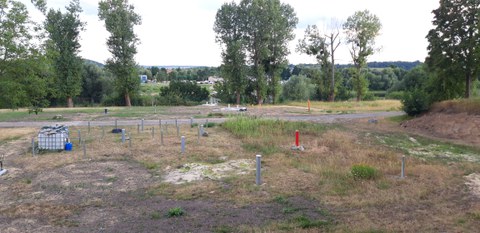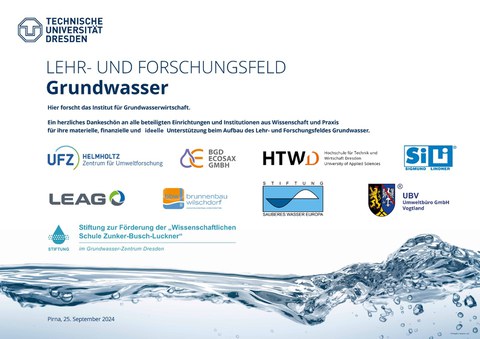Teaching and Research site "Groundwater"
The Institute of Groundwater Management operates a teaching and research site "Groundwater" (TRS) at the Pirna-Copitz site since 2008, which was established as part of a joint project with the Helmholtz Centre for Environmental Research (UFZ).
There are excellent conditions for innovative research and teaching as well as for establishing post-graduate training courses to strengthen (inter)national networking in the field of hydrogeology and the sustainable management of groundwater resources, the most important source of drinking water due to the already existing infrastructure and the additional infrastructure available after expansion measures,
The existing teaching and research site "Groundwater" at the Pirna site enables the implementation and practical demonstration of a wide range of established hydrogeological experiments as well as the testing of new hydrogeological methods.
Table of contents
Characterization of the site
The teaching and research site "Groundwater" of the TUD Dresden University of Technology is located on the site of the TU Dresden branch in Pirna-Copitz and borders directly on the river Elbe (Figure 1). The size of the teaching and research field "Groundwater" is approximately 2.5 ha (width 140 m, length 180 m), the distance to the Elbe is 50 to 150 m. The terrain slopes down towards the Elbe from an altitude of 119 m above sea level to an altitude of around 111 m above sea level.
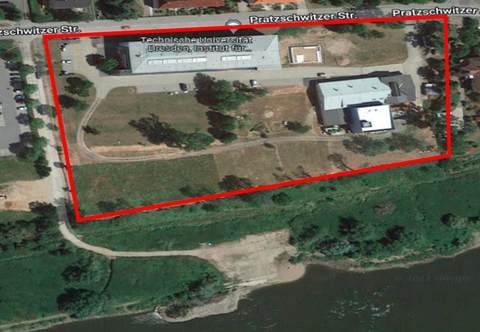
Figure 1: Aerial view of the teaching and research site "Groundwater"
Hydrogeology
The subsurface of the upper quaternary unconsolidated aquifer is characterized by fluviatile deposits with high variability. Heterogeneous, highly conductive sands and gravels can be detected below a layer of anthropogenic fillings down to a depth of up to 2 to 16 m below ground level (Figure 2). These are partly interspersed with silty sediments. Below a clayey-silty replacement layer of the upper Cretaceous (Pläner) or low-conductivity layer (no aquifer) with a thickness of approx. 50/60 m can be found. Below this is another chalk aquifer consisting of quartz/quartz sandstone, which is covered by an accumulating layer of plenus basistone. The conditions here are confined due to the existing inclination and coverage.
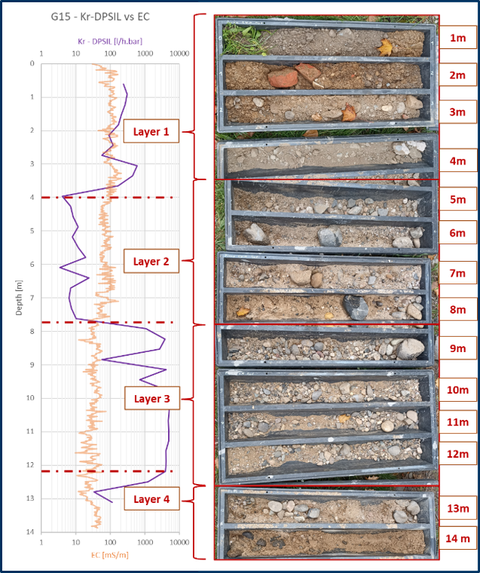
Figure 2: Hydrostrategraphy in unconsolidated aquifer
The groundwater level in the unconsolidated aquifer averages around 7 m below ground level and fluctuates between 4 and 10 m below ground level. The groundwater level is strongly dependent on the Elbe water level, which means that the groundwater flow direction is unsteady. From an Elbe water level of > 2.5 m (equivalent to 110.5 m above sea level), the effluent conditions, in which the groundwater flows from northeast to southwest, are reversed. Groundwater velocities of up to 2 m/h can be detected in the teaching and research site "Groundwater".
Infrastructure and opportunities for conducting experiments
The currently available infrastructure of the teaching and research site "Groundwater" is shown in Figure 3.
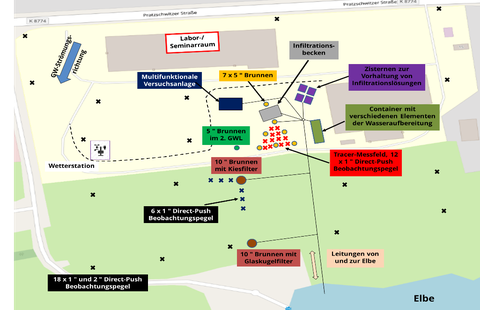
Figure 3: Overview of the current infrastructure of the teaching and research site "Groundwater"
The most important components of the teaching and research field "Groundwater" and the associated options for conducting experiments are presented below.
1 Inch Direct Push observation wells in the unconsolidated aquifer
On the site of the teaching and research site "Groundwater", 26 1-inch observation wells were installed up to a depth of 14 m below ground level using the direct push method (Figure 3, black crosses) and equipped with sensors to measure the groundwater level (Figures 4 + 5 + 6).
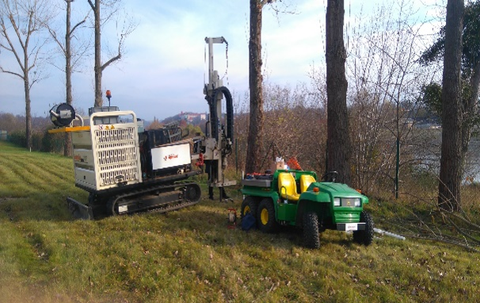
Figure 4: Installation of Direct Push observation wells
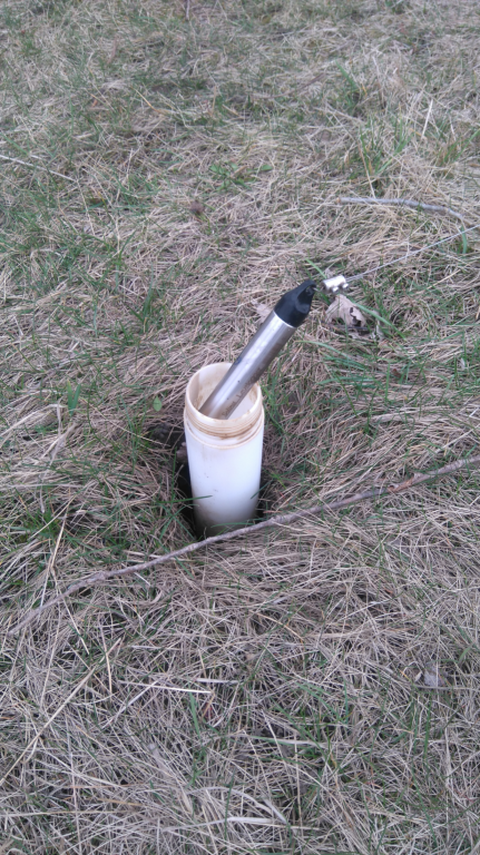
Figure 5: Direct Push observation well with installed pressure sensor
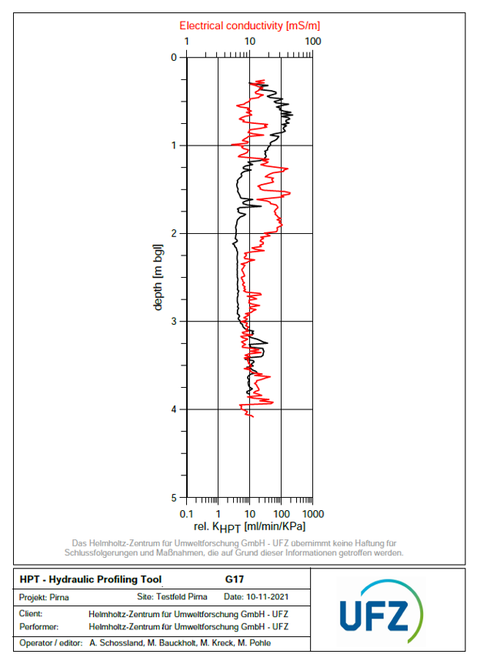
Figure 6: Exemplary results of the Hydraulic Profiling Tool (HPT) soundings carried out before the construction of the observation wells
Opportunities for carrying out experiment
- Determination flow conditions in the upper aquifer
- Demonstration of sampling using currentless systems such as bailers or foot valve pumps
- Monitoring of marking tests by installing 15 additional 1-inch observation wells in the central area of the teaching and research site "Groundwater" (Figure 3, red crosses)
5-inch groundwater observation wells in the unconsolidated aquifer
In the central area of the teaching and research site "Groundwater", there are seven 5-inch observation wells with a depth of 14 m below ground level (filter area 10 - 13 m below ground level) (Figure 2, yellow circles), which are equipped with multi-parameter probes for recording the water level, oxygen content, electrical conductivity and pH value (Figure 7 + 8).
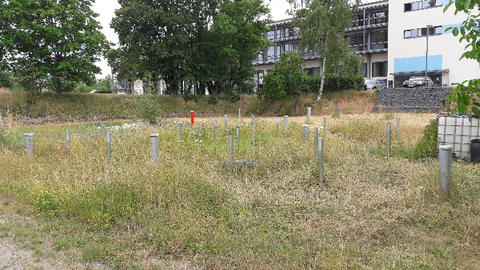
Figure 7: 5 inch observation wells in the central area of the teaching and research site "Groundwater"
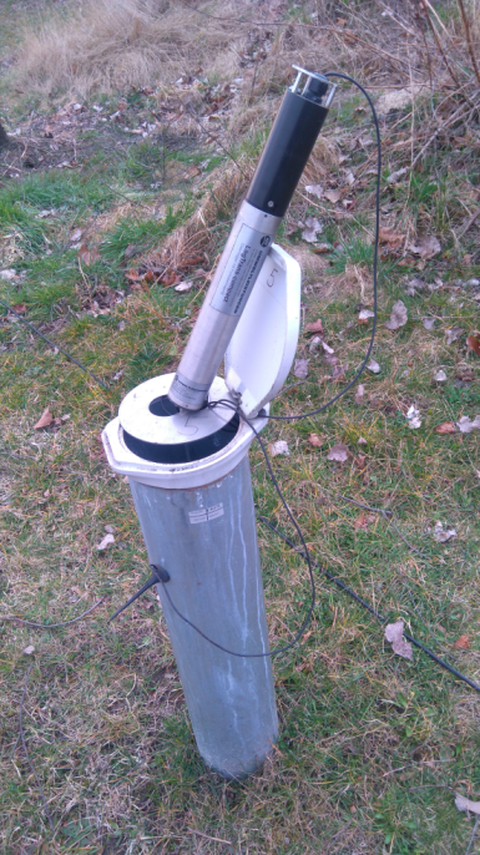
Figure 8: 5 inch observation well with installed multiparameter probe
Opportunities for carrying out experiments
- Marking tests with natural and forced hydraulic gradients, e.g. using the stable isotopes oxygen-18 and deuterium (and subsequent analysis in the Institute's stable isotope laboratory)
- Pneumatic slug tests to determine the hydraulic permeability at different depths
- Representative groundwater sampling (Figure 9)
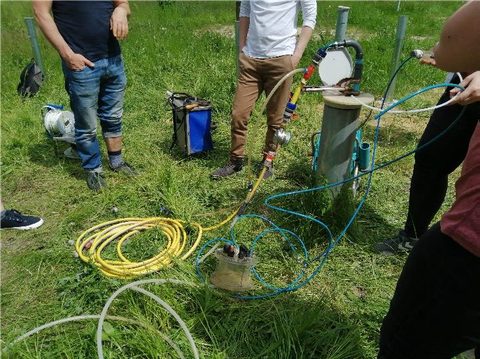
Figure 9: Representative groundwaters sampling
- Tests to observe the conservative and reactive transport of dissolved substances in the aquifer
- Infiltration tests using individual wells, well fields and infiltration basins to evaluate methods of artificial groundwater recharge
10 inch wells in the uconsolidated aquifer
Two 10-inch wells (filter range 10 - 14 m below ground level) were constructed using the grab drilling method (Figures 10 + 11 + 12 + 13) over the entire thickness of the unconsolidated aquifer (Figure 3, brown circles).
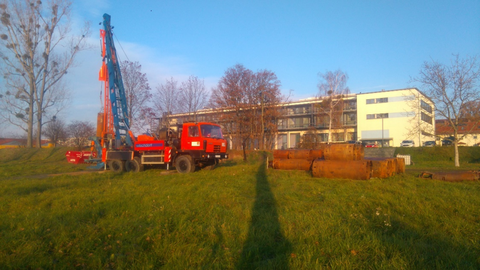
Figure 10: Installation of the 10 inch wells by means of the grab drilling method
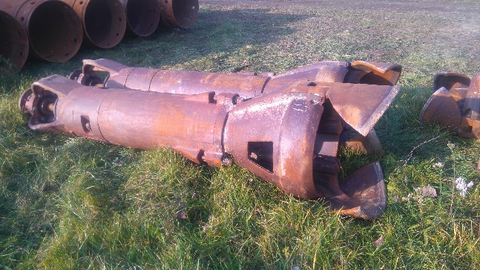
Figure 11: Grabber
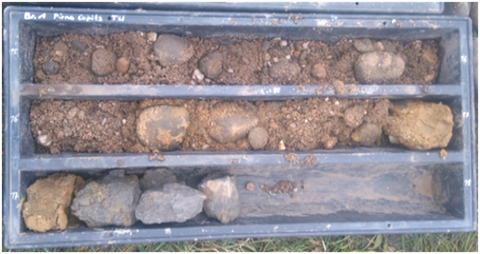
Figure 12: Transition from unconsolidated aquifer to clayey-silty replacement layer of the upper Cretaceous (Pläner)
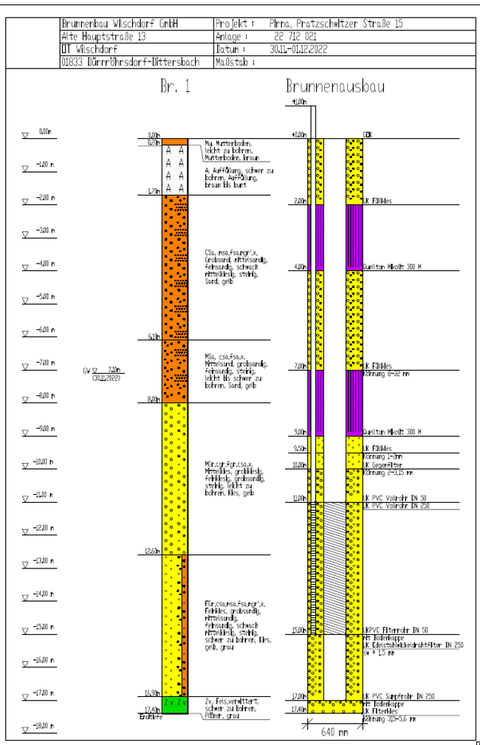
Figure 13: Profile of well 1
Both identical wells differ only in the choice of filter material: filter gravel was used in well 1, whereas in well 2 the filter area was constructed with glass beads (Figures 14 + 15). Submersible pumps with a flow rate of up to 100 m³/h are installed in both wells.
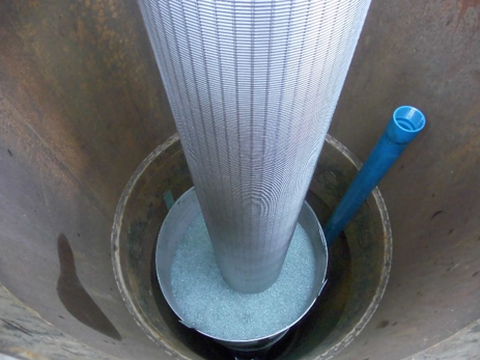
Figure 14: Inner glass bead bedding in the area of the filter pipe, installation of the dipstick pipe in the outer filter bedding
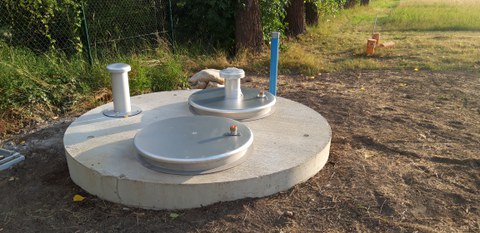
Figure 15: Exterior view of the well chamber
Opportunities for carrying out experiments
- Performance of pumping tests and demonstration of various analytical evaluation methods based on the recorded data (Figure 16)

Figure 16: Drawdown of the water level in wells 1 and in the surrounding observation wells in the course of a performance pumping test
-
Comparative observations on well aging processes due to the different filter materials, corresponding investigations on the regeneration of the different filter materials (Figure 17)

Figure 17: Gravel and glass bead filter material in the area of the filter tube (source: Sigmund Lindner GmbH, 2014)
-
Extraction of bank filtrate from the Elbe with the possibility of carrying out qualitative studies on material transport (e.g. trace substances) and reactive processes in the course of the interaction between the Elbe and the unconsolidated aquifer (Figure 18)
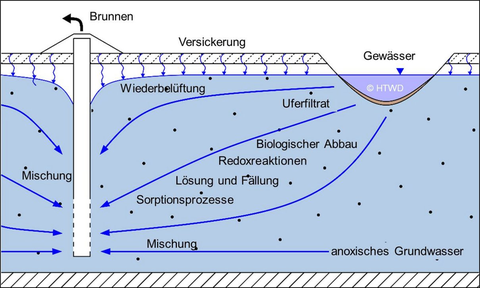
Figure 18: Principle of bank filtration (source: HTW Dresden, 2023)
5 inch observation well in the clayey-silty replacement layer of the upper Cretaceous (Pläner)
In the central area of the teaching and research site "Groundwater", there is also a 5-inch observation well (Figure 3, green circle), which was installed to a depth of 55 m below ground level (filter area 50 - 53 m below ground level) using the down-the-hole hammer drilling method (Figure 19 +20 + 21 +22). There is the opportunity of extracting groundwater from the clayey-silty replacement layer of the upper Cretaceous (Pläner).
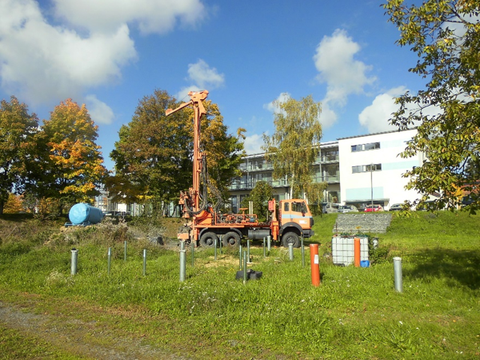
Figure 19: Drilling of the 5-inch groundwater observation well using the down-the-hole hammer drilling method
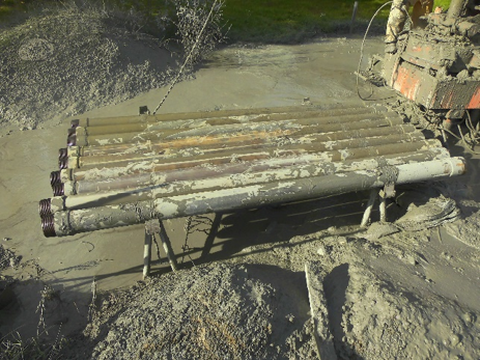
Figure 20: Pläner material blown out with compressed air
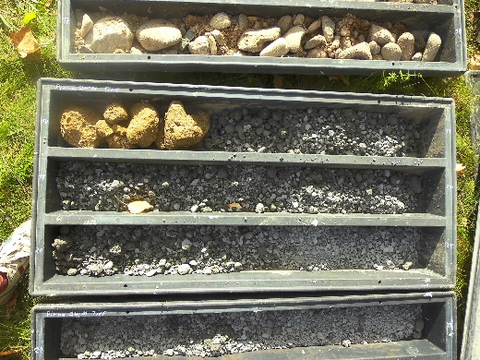
Figure 21: Transition from unconsolidated aquifer to clayey-silty replacement layer of the upper Cretaceous (Pläner)
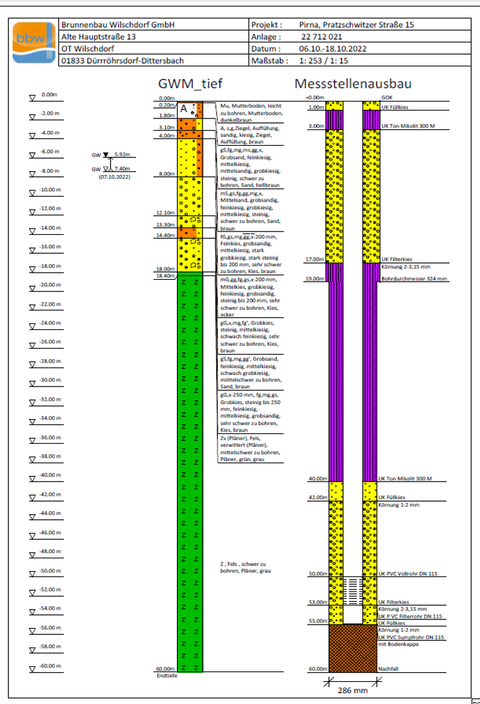
Figure 22: Profile of the observation well
Opportunities for carrying out experiments
- Opportunity of comparative investigations of different groundwaters with regard to qualitative aspects (ions, isotopes, temperature)
- Observation of the non-existent interaction between the Elbe and the lower groundwater aquifer and between the upper unconsolidated aquifer and the lower groundwater aquifer
- Carrying out pumping tests under partially confined conditions
Weather station
The installed weather station can be used to record climatic site conditions such as air temperature, air pressure, relative humidity, precipitation, wind speed and wind direction and thus characterize the site in terms of its climatic conditions (Figure 23).
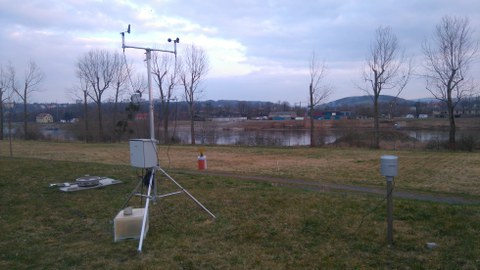
Figure 23: Weather station
Projects carried out at the site
The existing infrastructure has been used in recent years to carry out the research projects listed below:
- Rain as a groundwater tracer - DFG (Binder et al., 2019, Tritschler et al., 2019)
- Innovative web-based decision support system for water sustainability under a changing climate (INOWAS) - BMBF (Barquero et al., 2019)
- Smart framework for real-time monitoring and control of subsurface processes in managed aquifer recharge applications (SMART CONTROL) - BMBF (Glass et al., 2022)
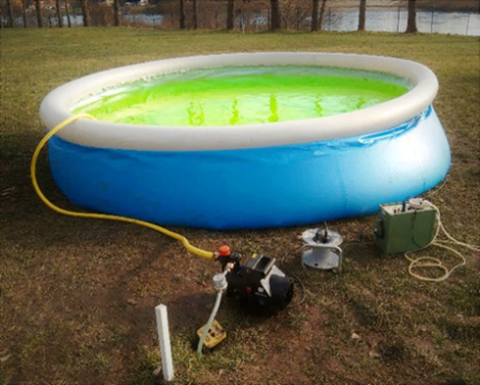
Project "Rain as a groundwater tracer"
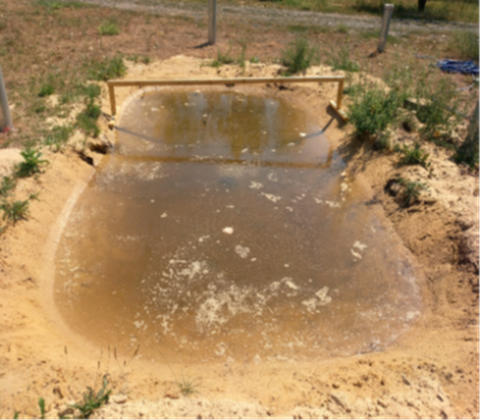
Project "Innovative web-based decision support system for water sustainability under a changing climate (INOWAS)"
Opportunities for use/cooperation
- Implementation of advanced training courses, e.g. mining hydrological monitoring, summer schools
- Cooperation with other research institutions, e.g. UFZ, HTW Dresden
- Realization of a wide range of hydrogeological experiments as part of research projects
- Practical demonstration of established and new hydrogeological methods as part of student training (Figure 24)
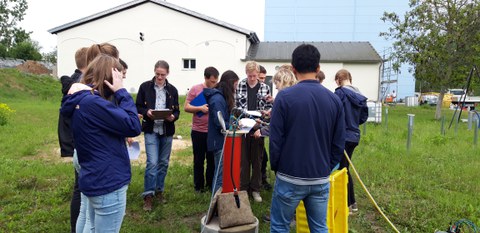
Figure 24: Practical demonstration of hydrogeological methods as part of student training
Acknowledgements
Contact person
Dr.-Ing. Thomas Fichtner (email: )
Address teaching and research site "Groundwater"
Institute of Waste Management and Circular Economy Pratzschwitzer Str. 15 01796 Pirna

